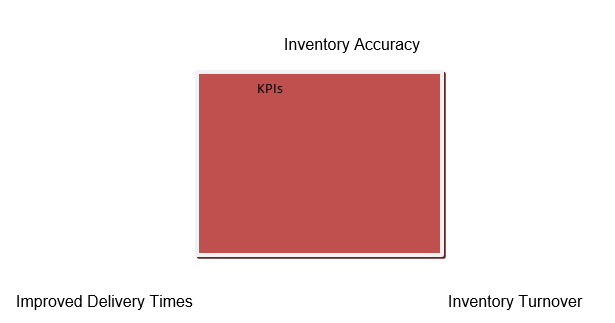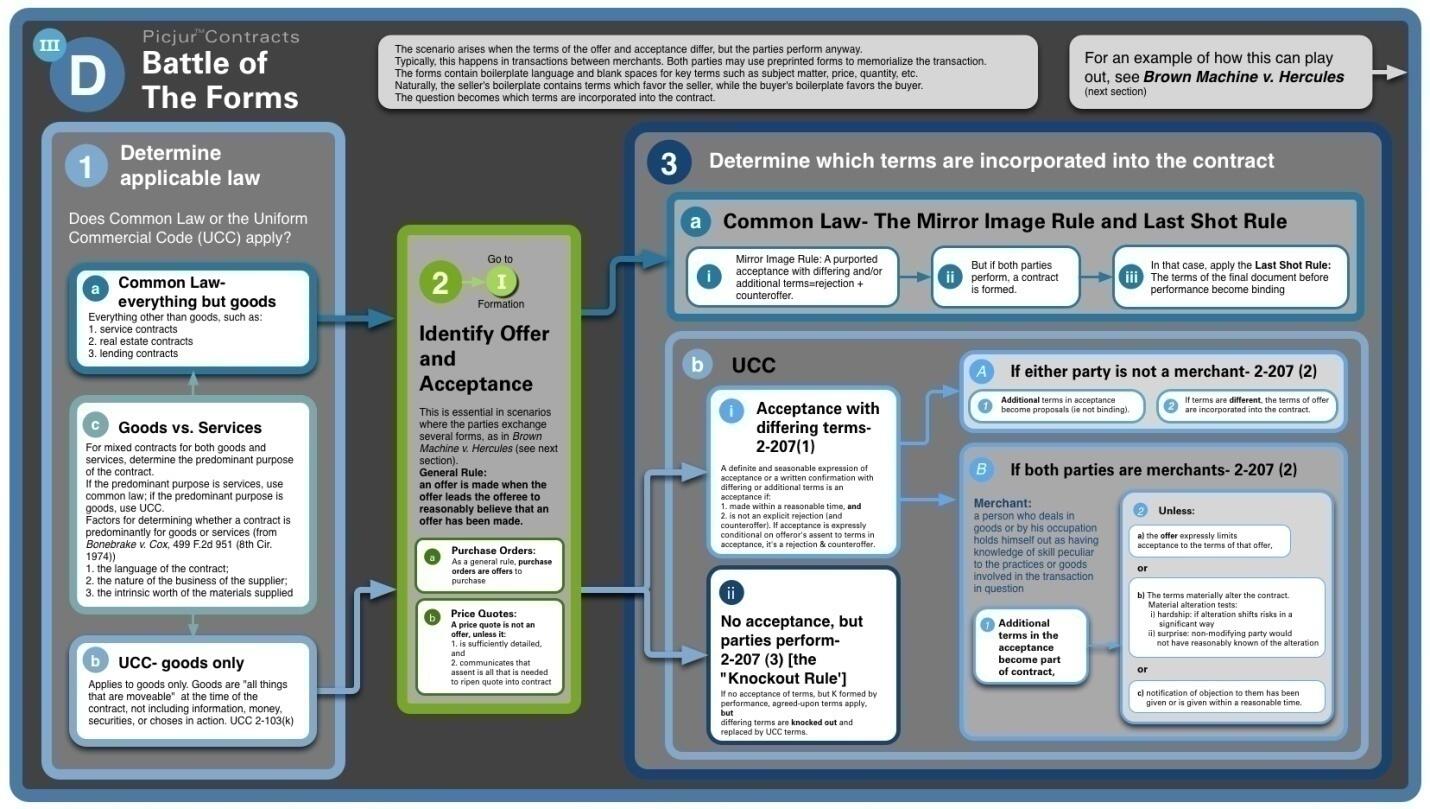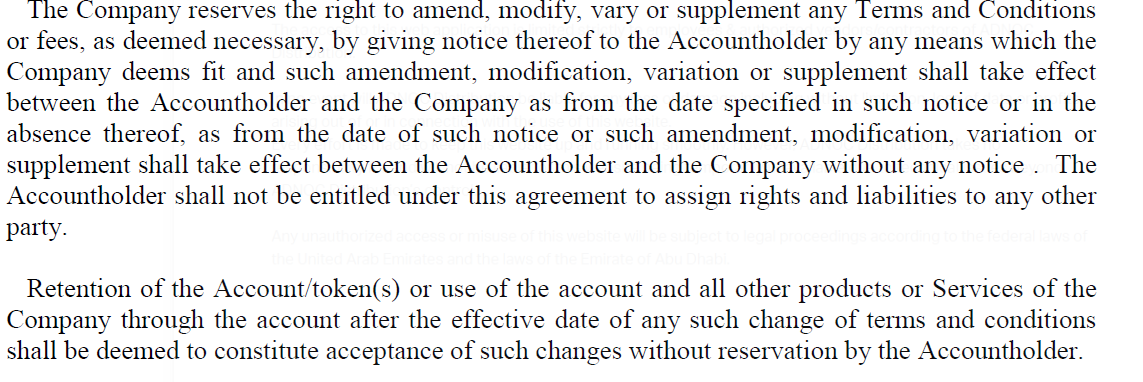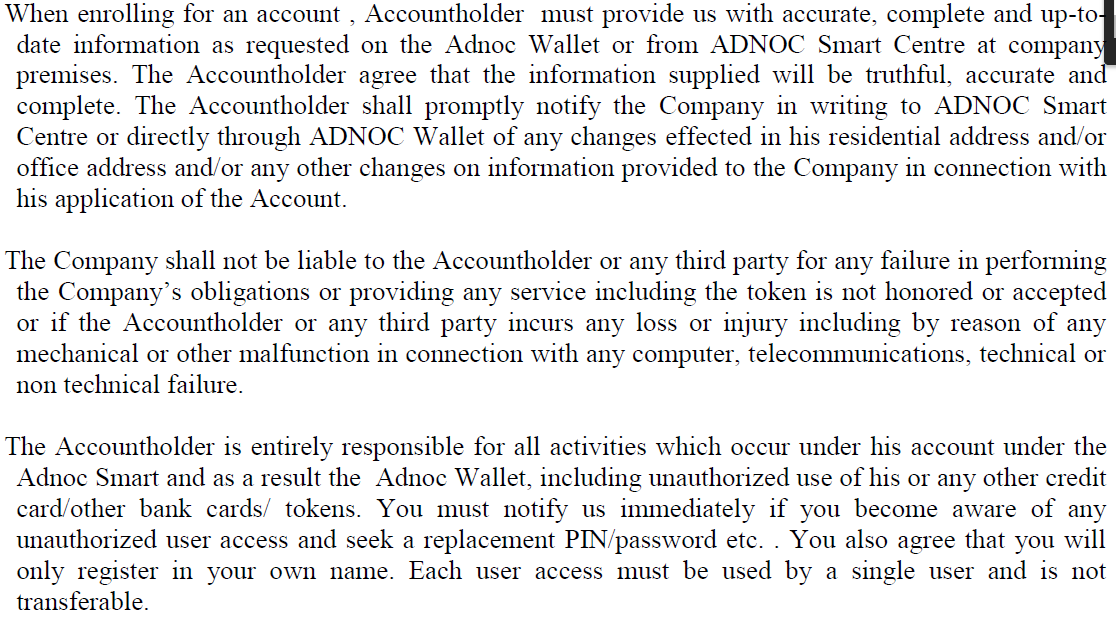Executive Summary
Although the formulation of commercial contracts has never been a simple task, today’s business transactions are more complex than ever before because of the proliferation of technical and commercial considerations in procurement and supply chain management. Based on these complexities, business managers must understand the fine print of commercial transactions and learn how to optimally structure their terms and conditions to achieve organizational goals and objectives.
This report suggests that Abu Dhabi National Oil Company (ADNOC) should improve its contract management terms by eliminating conflicts of interest, formulating transaction-specific contract management plans, and emphasizing the importance of suppliers to comply with company instructions by following its different stages of contract management.
Introduction
The commercial success of business transactions broadly depends on the flawless execution of business contracts (Böhm et al. 2016). Therefore, the importance of contract management cannot be understated because companies spend billions of dollars to procure goods and services. Indeed, even the creation of small changes to a contract’s terms could have a long-lasting impact on a company’s bottom line (Böhm et al. 2016). This document will explore the importance of terms and conditions in the development of procurement and supply chain contracts. It will be based on the procurement and supply chain management functions of the Abu Dhabi National Oil Company (ADNOC).
ADNOC
The author of this report is an employee of ADNOC. He works in the company’s contract department, which is a part of the firm’s procurement unit – Business Commercial Directorate. He is also a member of the company’s tender board, which is the apex organ for the formulation of legal decisions affecting ADNOC’s procurement and supply chain management. Therefore, he has a wealth of knowledge regarding the company’s terms and conditions for procurement and supply.
Contract
Contract Definition
According to Duhaime Law (2018), a contract refers to “An agreement between persons which obliges each party to do or not to do a certain thing” (p. 1).
The contracts formulated by ADNOC are subject to the following set of laws.
Contract Law
Contract law stipulates the expectations of both the company and its clients regarding what to expect in the delivery of products and services. Similar to the recommendations of Monczka et al. (2015), the purpose of using contract law to guide ADNOC’s contract formulation process is to allocate rights and responsibilities to all parties involved.
Sharia Law
Stemming from the fact that ADNOC is a company based in the United Arab Emirates (UAE), Sharia law influences its operations. This set of laws requires the company to adhere to ethical values ascribed to Islam. In other words, the law requires the company to formulate terms and conditions that are within the limits of the divine law. ADNOC subscribes to this stipulation.
Custom
The general rule of thumb associated with the formulation of business contracts is that managers are free to formulate agreements the best way they deem fit for the actualization of business goals (Akdeniz 2019). ADNOC is no different because the company offers its clients customized terms and conditions, depending on their business needs. The complexity involved in the formulation of these contracts is often privy to top managers.
Importance of Terms and Conditions to the Organization
Terms and conditions are relevant to the implementation of procurement functions at ADNOC because they ensure relevant performance measures are monitored and managed. Ambiguity in drafting company contracts has undermined ADNOC’s ability to improve its key performance indicators (KPIs), which include inventory accuracy, improved delivery times, and inventory turnover. These KPIs are triangulated in figure 1 below.

Weaknesses in the company’s formulation of terms and conditions have negatively affected the implementation of commercial transactions. They have also been associated with lengthy legal tussles between the legal and procurement departments of the company, thereby leading to time and resource wastages. Many things have caused this state of affairs. One of them is time limitations.
This problem has particularly been associated with short-term transactions that have to be implemented in a limited time. For example, sometimes orders come from the CEO and executive directors to finalize contracts without giving the company’s legal department enough time to draft a comprehensive agreement or research what the transaction should entail. These challenges are being addressed through the review of the company’s terms and conditions to help in monitoring the company’s KPIs.
False optimism among some of the company’s key managers and directors has also undermined the realization of the company’s KPIs. This problem mostly occurs when there is a leadership change or when inexperienced managers take over the company’s management. The lack of trust between the company and some of its business partners has also added to this problem. In some cases, the same outcome is reported when there is misplaced trust between the company and its suppliers. According to Babin, Bates, and Sohal (2017), such a problem could have serious negative ramifications to the company’s ability to meet its KPIs. However, current terms and conditions have mitigated this problem.
ADNOC’s failure to achieve some of its KPIs also stems from the fact that its terms and conditions do not effectively address language barriers, which affect the organization’s ability to execute contracts between the company and its international suppliers. To counter such a problem, some researchers suggest that companies, which have experienced such a problem, should have predetermined terms and conditions to guide the contract drafting process (Macdonald, Atkins & Atkins 2014).
Indeed, as Fishman (2017) and Ochonma (2015) suggest, doing so lessens the risk of poor contracting. Humbert and Mastice (2015) also suggest that firms should have tailored contract language to address this issue. In line with this proposal, ADNOC has used terms and conditions in contract management to mitigate this risk. Indeed, having a tailored language has been beneficial to the company for three reasons. The first one is that such language can be used throughout the organization. Secondly, it increases the understanding between concerned parties by providing explanations and suggestions that could be used for better reference and understanding of contract terms. Lastly, a tailored language format has provided case synopses for providing information about contracts.
Lastly, besides helping the firm to meet its KPIs, terms, and conditions also help ADNOC to manage its costs by allocating payment duties to respective parties based on the terms of a contractual relationship. For example, the terms and conditions stipulate who should be responsible for the payment of transport costs and tax liabilities between the organization and its suppliers. These stipulations reduce the probability of misunderstandings relating to overruns.
Concept of the Battle of the Forms
What is it?
Battle of the forms occurs when two parties, which are engaged in a business contract, provide two types of contract terms, thereby causing a dispute regarding which one should be used (Stone & Devenney 2017). Stated differently, a battle of the forms often emerges when two parties engaged in a contract agree about its existence but hold different views regarding whose terms should govern it. Often, people have different views regarding how to solve a battle of the forms. One of them is the last document rule, which is premised on the fact that the binding contract is based on whichever party sent the last contract (Stone & Devenney 2017).
For example, some jurisdictions consider the seller’s delivery note as the main document because it is the last offer. Therefore, a buyer is deemed to have accepted the offer based on his acceptance to use the goods delivered or by signing the delivery note (Stone & Devenney 2017). Different jurisdictions have varied methods of interpreting this principle of contract management, but in the US, it is defined as the “last shot” (Stone & Devenney 2017).
In English law, the battle of the forms is analyzed differently and the case between Butler Machine Tool Company vs. Ex-Cell-O Corporation best highlights this fact. The case was about which standard form contract should be used in transactions. One view, which was held by Lord Denning, suggested that documents should be viewed as a whole and not in different parts (Stone & Devenney 2017). However, knowing which document to use in the first place was problematic. A different school of thought advanced by Lawton and Bridge supported the offer-acceptance model, whereby an offer reply, which proposes a modification of terms, amounts to a rejected offer (Stone & Devenney 2017).
This principle is upheld in the Vienna Convention Uniform Law for International Sale of Goods, which was formulated in 1980 (Stone & Devenney 2017). Nonetheless, figure 2 below explains the broader management processes for the battle of the forms.

Several other cases involve the battle of the forms. One of them is Balmoral Group Limited vs. Borealis Group Limited (2006) where Borealis was sued for not abiding by the contract terms because the company changed the prices of goods delivered (Stone & Devenney 2017).
The courts held that Borealis Group Limited intended the pricing of its products to be according to the terms set out in its invoice and that the company knew the terms and conditions were always written at the back of the invoice (Stone & Devenney 2017). However, it chose to continue making payments without demur, even though they were notified about changes in the same terms. Other cases that have involved the battle of the principle of the form include the University of Plymouth vs. The European Language Center Limited (2009) and Butler Machine Tool vs. Ex Cell-O Corp (1979) (Stone & Devenney 2017).
ADNOC’s Terms and Conditions
Based on the above-mentioned understanding of the battle of the forms, it is important to point out that ADNOC’s terms and conditions are products of a six-step model of procurements and supply. The six stages include enabling contract management, contract performance monitoring and control, change management, dispute management and resolution, financial management payment, and contract completion. Figure 3 below shows the different stages of contract management adopted by ADNOC.

These six stages defined above are used to crosscheck the terms and conditions that are applied in any contract. Broadly, they help to improve the contract management process by changing contract management procedures, especially when specific provisions are under review. In case any dispute emerges in the process of implementing a contract, a dispute management mechanism is initiated to find a solution before any further legal action is pursued. A detailed understanding of the company’s terms and conditions relating to the organization’s processes is explained in the specific subsets of the organization’s processes outlined below.
Managing Risk of Poor Quality
Terms and conditions are instrumental in managing the risk of poor quality products and services at ADNOC because they provide a clear outline of desired quality expectations to its suppliers. In other words, terms and conditions provided by the organization set out rules and guidelines regarding quality management that both the organization and its suppliers must agree and adhere to. Broadly, the standard terms and conditions applied to ADNOC’s procurement department apply to every contract involving the purchase of goods or services.
Exclusions are only provided when there are other expressly agreed terms between the company and its clients. Accordingly, all offers made are subject to the above-mentioned contractual terms. The quality of products and services supplied to the company is as agreed by different parties, depending on the type of order made.
Managing Time
ADNOC has few issues relating to the battle of the forms because an offer made by the company is considered legally binding when a supplier accepts it and countersigns the purchase order. Here, the delivery order needs to be countersigned seven days after receipt of the goods. If the supplier does not respond within this period, the company is at liberty to cancel the order or recoup damages at their expense. The company is also free to make changes to the contract (in writing) at any time. However, if such changes lead to variations in time, the client can request changes to the prices charged for the delivery of the goods or services. However, such a request has to happen within 10 days.
Broadly, ADNOC’s terms and conditions aid in ascertaining when and where its suppliers should deliver goods or provide services. They also protect the organization from incurring additional costs that may arise from the failure to deliver goods on time. At the same time, they protect the organization from liabilities that could stem from logistical challenges, such as weather conditions, that may inhibit a supplier’s ability to deliver products on time.
Managing Costs
The cost of providing goods and services to ADNOC is usually provided in the offer documents. The company is not liable for any contractual changes (additions or subtractions) that the client makes, subject to the order confirmation documents. Similar to the terms and conditions attributed to the company’s time management plan, ADNOC can make changes to the contract (in writing) at any time. However, if such alterations lead to variations in cost, the client is at liberty to request changes to the prices charged or the time previously agreed for the delivery of goods or services. Again, similar to the provisions of time stipulated above, the client has to make such requests within10 days of learning about the changes.
Prevention of Unethical Business Practices
ADNOC has been rocked by cases of unethical business practices that stem from oversight failures in contract management. These issues stem from the failure to implement a consistent set of policies and procedures when formulating contractual agreements. The problem has been catalyzed by the company’s inability to establish proper controls in contract management. Consequently, several unethical business practices have emerged. For example, some third-party vendors have exploited ambiguities in contract terms to commit unethical business practices or to deliver substandard goods or services without repercussions from the company’s managers. The firm is currently reviewing its terms and conditions to make sure it gets goods and services that meet the organization’s expectations.
In light of the above issues and instead of the conflict caused by the battle of the forms, any contractual terms made by ADNOC and its partners that contravene mandatory provisions of the law are deemed irrelevant because the latter is regarded as the prevailing legal basis for implementing a contract. However, this principle of the battle of the forms only applies to the extent of the variance noted. Consequently, only those order documents that are provided by the company in writing before the execution of a contract are legally binding. The same is true for oral agreements because they have to be in written form before the company is legally bound to implement them. ADNOC’s full set of terms appear in Appendix 1 (ADNOC Distribution 2018).
Relative to the principle of the battle of the forms highlighted above, I believe that ADNOC should use the last document rule, which is premised on the fact that the binding contract should be based on whichever party sent the last contract. In other words, the supplier’s delivery note should be the main document governing contracts because it is the last offer. Therefore, the conglomerate should be deemed to have accepted such an offer based on its acceptance to use goods delivered or by accepting to sign the delivery note. The justification for this proposal is its simplicity in execution.
Conclusion
The findings of this study show that the formulation of effective terms and conditions is an important part of contract management processes. The proper formulation and execution of such legal documents could yield several advantages to ADNOC, including the improvement of quality standards and the delivery of goods and services at the right cost and within the specified time. ADNOC has for a long time, enjoyed these benefits, but as outlined in this paper, the organization has also encountered several challenges associated with its implementation. The following recommendations should be adopted to improve compliance with the company’s terms and conditions.
Recommendations
At ADNOC, the procurement officer ensures that the terms and conditions stipulated in the company’s contracts are effectively followed. Therefore, he must make sure that all agreed terms and conditions are modified concerning current circumstances so that the organization is not disadvantaged by changing business conditions. To make sure that agreements are carried out under the organization’s terms and conditions, it is important to ensure that all payment functions are undertaken independently of the procurement department. This strategy should prevent any conflict of interest from occurring.
Additionally, to ensure that agreements are carried out under the organization’s terms and conditions, it is vital to guarantee that different stages of contract management are followed. Particularly, seeking partnerships between different layers of stakeholder involvement should be encouraged because the effective implementation of contracts requires partners to work together. Here, the basic principle should not be that the parties should refrain from finding fault in contracts but rather work together to ensure their successful completion.
ADNOC should also make changes to its terms and conditions by requiring all suppliers to cooperate with the company’s instructions when executing procurement contracts. This suggestion stems from past incidences where suppliers have failed to comply with the firm’s instructions because of their incompetence or laziness. This proposal could minimize incidents where suppliers secretly sabotage contractual terms without necessarily breaching explicitly laid out procedures in the original contract terms. Consequently, if they were legally mandated to comply with company instructions, such incidences would decline.
Lastly, ADNOC should also use tailored language when formulating transaction-specific contract management plans. Such plans could be developed by any of the parties involved but they should be availed to all employees to guide how they implement the contracts. The contract management plan is often not shared by the other party of the contract because it relates to the internal dynamics of an organization and how they should be redesigned to facilitate the contract implementation process.
Therefore, the role of the contract management plan should be to supplement the main contract and provide a platform for the company to document new knowledge to improve the performance of future transactions. It is important to have this contract management plan because regardless of the contents of the original contract terms, the implementation of the same contract should yield cost savings and increase value for the company.
Reference List
ADNOC Distribution. (2018). ADNOC Smart Terms & Conditions for Prepaid Account. ADNOC. Web.
Akdeniz, C. (2019). Crash Course Business Agreements and Contracts. Can Akdeniz. New York, NY.
Babin, R, Bates, K., and Sohal, S. (2017). The role of trust in outsourcing: more important than the contract. Journal of Strategic Contracting and Negotiation. vol. 3. no. 1. pp. 38-46.
Böhm, E, Backhaus, C, Eggert, A. and Cummins, T. (2016). Understanding Outcome-Based Contracts: Benefits and Risks from the Buyers’ and Sellers’ Perspective. Journal of Strategic Contracting and Negotiation. vol. 2. no. 2. pp. 128-149.
Duhaime Law. (2018). Duhaime’s Law Dictionary: Contract Definition. Duhaime Law. Web.
Fishman, S. (2017). Consultant & Independent Contractor Agreements. Nolo. New York, NY.
Humbert, P. and Mastice, R. (2015). Good Contract Terms and Conditions are vitally important and Need to Reflect Both Good Risk Allocation and Post Execution Contract. European Financial Review. Web.
Macdonald, E, Atkins, R. and Atkins, RD. (2014). Koffman & Macdonald’s Law of Contract. Oxford University Press. Oxford.
Monczka, RM, Handfield, RB, Giunipero, LC. and Patterson, JL. (2015). Purchasing and Supply Chain Management, 6th edn. Cengage Learning. London.
Ochonma, E. (2015). Procurement and Supply Chain Management: Emerging Concepts, Strategies, and Challenges. Author House. London.
PicJur. (2019). Battle of the Forms. Google Images. Web.
Stone, R. and Devenney, J. (2017). The Modern Law of Contract. Taylor & Francis. London.
Appendix
ADNOC’s Terms and Conditions

